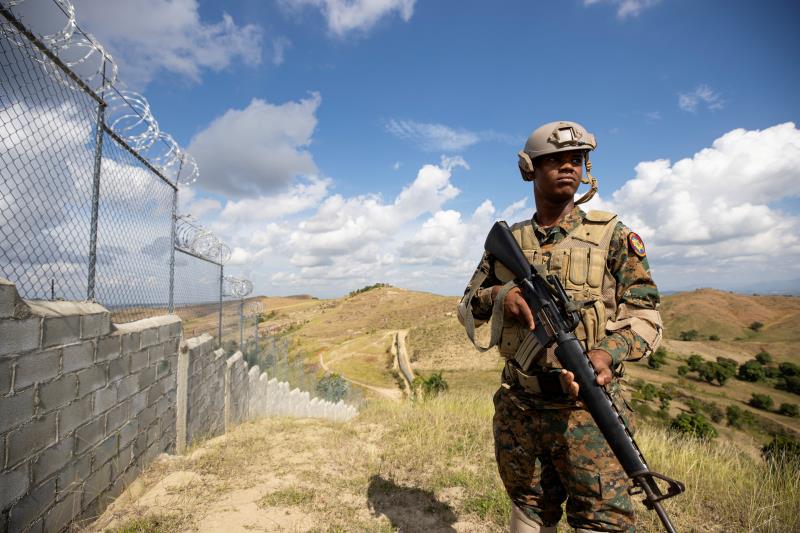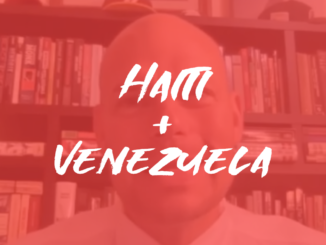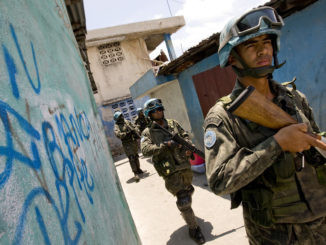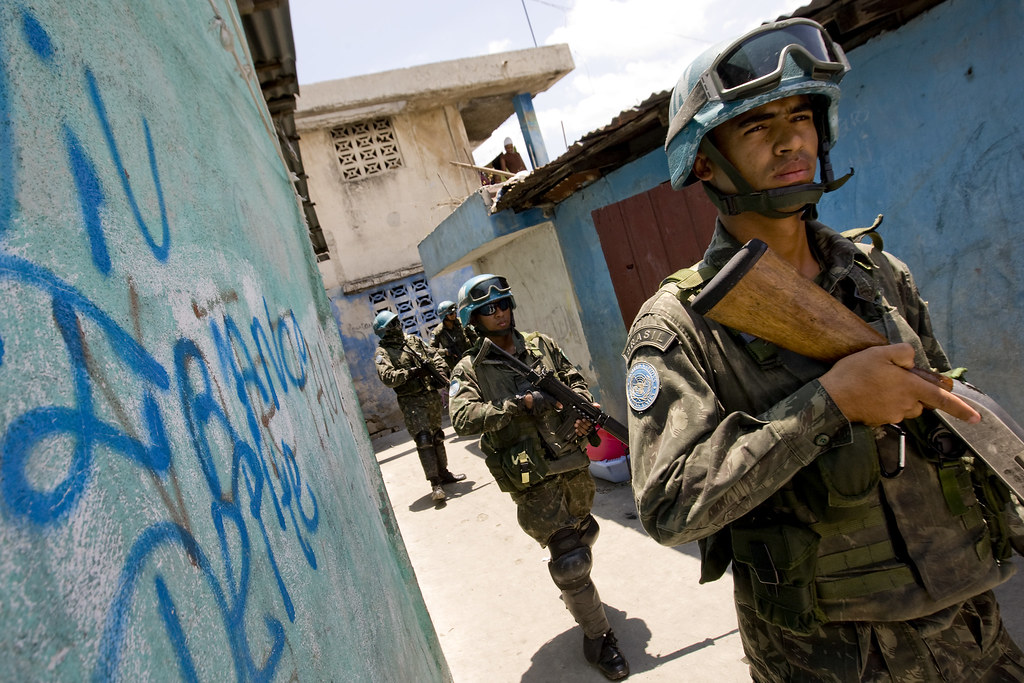
Editor’s Note: The following is the writer’s analysis and was originally published in Eurasia Review.
On December 16, two Haitian embassy diplomats—Williamson Jean and Jackson Lorrain—were arrested on their way from the Dominican Republic’s capital of Santo Domingo to a farm in the Monte Cristi province, where they were planning to deliver 11 passports for the hundreds of Haitian workers awaiting their arrival. The Dominican military confiscated the passports and computer equipment used to produce personal identification cards—all of which belong to the Haitian state. The arrest took place in spite of Jean and Lorrain showing diplomatic identification, the authenticity of which was later confirmed by a top Haitian consulate official, Francois Guerrier.
These incidents have occurred against a backdrop of rising tensions between the two countries, with the Dominican Republic tightening border surveillance and implementing a series of measures to curb irregular migration from Haiti.
Colonial Exploitation
Present-day hostilities between the countries that occupy the island of Hispaniola are deeply rooted in the historical soil of racism and imperialism. The 1697 Treaty of Ryswick formalized French control over the western third of Hispaniola—at that time a Spanish asset—under the name of Saint-Domingue. In 1797, Spain ceded the entire island to France. A valuable spigot of wealth, Saint-Domingue supplied two-thirds of the overseas trade of France and was the greatest individual market for the European slave trade. It was a greater source of income for its owners than the whole of Britain’s thirteen North American colonies combined.
The half-a-million slaves who propped up the dazzling opulence of the French commercial bourgeoisie rebelled in August 1791—two years after the French Revolution and its ripple effects in Saint-Domingue. Collective British, Spanish and French efforts to crush the rebellion set off a war that lasted 13 years and concluded with the humiliating defeat of imperial powers. William Pitt the Younger and Napoleon
Bonaparte together lost some 50,000 troops in the campaign to restore slavery and the elaborate structures of exploitation. The defeat of the latter’s expedition in 1803 resulted in the establishment of the state of Haiti on January 1, 1804. Frightened by Haiti’s establishment of a black republic resolutely opposed to the barbarism of European civilization, Dominican elites developed a national identity that defined Dominicans as white, Catholic and culturally Hispanic, in contradistinction to Haitians, whom they characterized as black, animist and culturally African. “Antihaitianismo,” or anti-Haitian racism, became stronger with Haiti’s occupation of the Dominican Republic, which lasted from 1822 until 1844.
President Jean-Pierre Boyer—under whom Hispaniola was unified—feared the French would use Dominican territory as a base to try to re-conquer Haiti. His decision also followed a constitutional ideal: Merger of the whole island in the face of foreign aggressions. Though Haiti’s occupation was welcomed positively by poor Dominicans, the Dominican ruling class disliked being ruled by people they considered inferior. Thus, soon after Boyer was overthrown in 1843 and General Charles Rivière-Hérard took power, a small group of activists in Santo Domingo overturned unified rule. Rivière-Hérard tried to oppose the separation and sent troops eastward, but he was more focused on the consolidation of power at home and could not succeed due to domestic instabilities. On February 27, 1844, the Dominican rebels drove the last Haitian troops from the capital, securing independence.
The Myth of the “Indio”
The fight for independence among Dominicans was heavily tainted by anti-Haitian myths. One such myth concerned the Dominican “Indio.” Even though the indigenous Taíno people were mostly killed after the Spanish conquest, Dominican leaders insisted Dominicans’ ancestors were Indigenous and Spanish, not enslaved African laborers. Why were Indigenous people chosen as the central symbol of Dominican identity? Taínos are neither white nor Black—an attribute capable of accommodating the ambiguity of the Dominican mulatto, a slang term for a person of mixed European and African ancestry. Battle lines were now drawn according to this racial schema—the Indio being pitted against the Haitian, who came to be regarded as the real Black.
These conflicts intensified over the subsequent decades, preparing a context of disunity favorable to the imperial project of the United States, which threatened both nations of Hispaniola with the possibility of intervention if they did not get “upheavals and banditry” under control.
Using these pretexts, the U.S. empire invaded the Caribbean island. First in 1915 in Haiti, then entering the Dominican Republic in 1916. The 8-year-long occupation of the Dominican Republic sparked the creation of a comprador class—local people who served as a subsidiary to the foreign corporations that owned Dominican sugar plantations through their dominance in the National City Bank of New York, which managed the country’s finances. A social architecture as rigidly exploitative as this required an authoritarian government—an imperative fulfilled by the Guardia Nacional Dominicana (Dominican National Guard, or GND). The U.S. Marines instructed Rafael Leonidas Trujillo to lead the GND in 1918 and made him commander-in-chief of the National Army in 1927. In 1930, with support from his military, Trujillo supported a coup against then-President Horacio Vasquez.
Under the ruthless dictatorship of Trujillo—which lasted until 1961—antihaitianismo solidified. In 1937—during what is now called the Parsley Massacre—Trujillo aimed to whiten the Dominican Republic by expelling Haitians. Trujillo, who was known to lighten his own skin with makeup, ordered the deaths of those who refused his order to leave. These Haitians were recognized by their inability to pronounce “perejil,” Spanish for “parsley.” Most Haitians could not make the Spanish “r” sound as the French “r” was different. This massacre killed nearly 30,000 people. These mass killings were followed by the production of propaganda in favor of an anti-Haitian ideology. Dominican history books started over-emphasizing the Haitian occupation—the demonization of the dark-skinned “other” became par for the course.
In 1962, Juan Bosch ran for president under the Dominican Revolutionary Party (PRD), inaugurating the first democratic government of the post-dictatorial era. Seven months later, he was overthrown by a coalition of the oligarchs, the old Trujillist army and the Catholic Church. Faced with a popular revolt, the putschists solicited the support of the United States, which sent its military in 1965, killing 5,000 people. After the defeat of the democratic revolution, Joaquin Balaguer—a disciple of Trujillo—led a repressive government. An anti-communist flunky of the United States, as well as a close collaborator of François Duvalier’s dictatorial regime in Haiti, Balaguer’s 12-year reign was responsible for incarcerating, torturing and murdering 6,000 people.
In the late 1970s, the PRD came to office. After that, the reins of the national government alternated among the PRD, the Dominican Liberation Party (PLD) and, briefly, the Social Christian Reform Party (PRSC)—associated with Balaguer.
Antihaitianismo Under Neoliberalism
While the PLD became largely dominant, the PRD came to represent the country’s main official opposition. With the growing impact of neoliberal globalization, the progressive legacy of the struggle against Trujillismo and Balaguerismo was abandoned in favor of a rightward shift toward anti-Haitian Hispanophilic identities. In 2010, the formerly center-left PLD called a constitutional convention, largely to exclude a new group from the birthright-citizenship clause: The children of anyone “residing illegally in Dominican territory.”
The injunction was aimed at Haitians and served as a blueprint for the Constitutional Court’s regressive ruling on September 23, 2013. It declared the nearly 500,000 Haitians living in the Dominican Republic were illegal, thus subject to deportation. The ruling extended to the descendants of Haitian immigrants who came to the Dominican Republic as early as 1929. Systematic stigmatization has enabled the Dominican bourgeoisie to force Haitians into conditions of semi-slavery on sugar plantations, to deport tens of thousands of Haitians without a court hearing, and to deny citizenship and access to public services to Dominican-born children of Haitian parents. In the en masse expulsions of Haitians, some dark-skinned Dominican citizens have been identified as Haitian and deported to Haiti without being given a chance to prove citizenship. This is emblematic of a wider problem facing the Black and mulatto masses of the Dominican Republic: To either assume the Indio identity and Hispanic culture, or to be ostracized from the body politic.
In 2014, when former president Hipólito Mejía left the PRD to form the Modern Revolutionary Party (PRM), Luis Abinader—a 52-year-old businessman with no previous experience in public office—jumped on the bandwagon. In 2020, he was elected president, ending the 16-year dominance of the PLD. Dominicans of Haitian descent—who make up 7.3 percent of the population—had placed their trust in the administration, hoping it would put an end to their condition of statelessness.
Abinader, however, has continued to deport thousands of Haitians. He also has begun constructing a 118-mile border wall between Haiti and the Dominican Republic. The estimated cost is over $100 million. Taking into account the negative impact of the pandemic on tourism, construction and the flow of remittances, the erection of a xenophobic wall should be the last thing on Abinader’s agenda. The government’s continued maintenance of such an exclusionary project indicates it is fundamentally anti-people in nature, using antihaitianismo to deflect the public’s attention from its destructive, market-oriented economic policies.
Yanis Iqbal is an independent researcher and freelance writer based in Aligarh, India. He can be contacted at [email protected].




